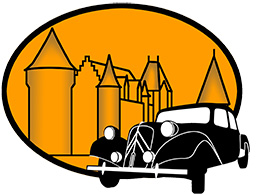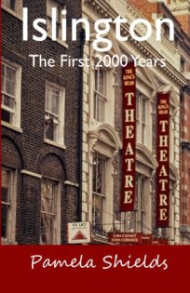Off to The Smoke via Liverpool Street Station to visit Two Temple Place to see an art exhibition on The Bloomsbury Group. Having spent time at Charleston, one of their many homes, we know quite a bit about them.
The real purpose of our visit, however, was to check out the house itself because it’s only open when an exhibition is on.
The ‘Temple’ in Temple Place is because it’s not far from The Temple Church in the City of London, not to be confused with the City of Westminster. Where The Strand meets Fleet Street stood Temple Bar, to, well, bar strangers entering the City. It was replaced with a beautiful stone arch designed by Sir Christopher Wren but even he could not compete with commerce. It was dismantled because it impeded traffic (the story is in Hertfordshire A~ Z). Today the historic site is marked with a dragon which marks the boundary of the City.
Even William the Conqueror had to stop at Temple Bar. He never did conquer the City. He is known there as William the Bastard. The Lord Mayor, not to be confused with the Mayor of London, raised his sword to give him permission to enter. Today, when the Queen enters the City, a short ceremony still takes place but these days, the Lord Mayor surrenders his sword.
Despite not being fans of the wealthy, privileged, self-indulgent, debauched Bloomsbury Group, the Exhibition – no photography allowed due to copyright restrictions – was excellent. It was all about wealth, privilege, self-indulgence and sex. A painting by Duncan Grant of one of his string of homosexual lovers is pornography posing as art as are Eric Gill’s drawings of his daughter in the nude. His so called ‘sexual experimentation’ was paedophilia. His diaries describe incest with his daughters and his sisters. Going round the exhibition one was reminded of Dylan Thomas and his Under Milk Wood. ‘…how’s Organ Morgan, Mrs Morgan?’ ‘It’s organ organ all the time with him’.
Two Temple Place is also all about wealth, privilege and self-indulgence. It’s also about social climbing. Being the richest man in America was not enough for William Waldorf Astor; he wanted to be an English aristocrat and did what he had to do to buy a title.
To many, his show of wealth is obscene. He didn’t even live here. Two Temple Place was his office. It has a solid mahogany and oak staircase. The ground floor, worthy of Westminster Abbey, is marble, jasper, porphyry and onyx. The gallery has columns of ebony. Characters from history are hand carved. There’s a hammer-beam roof of Spanish mahogany in a vast room panelled in cedar wood. The stained-glass is astonishing. Rare woods and semi- precious stones from all over the world say look how rich I am. As Kenny Everett used to say while flashing his red satin knickers it was ‘all done in the best possible taste’. Not.
Looking for nourishment we stumbled across The Edgar Wallace, a traditional, authentic, old-fashioned London Pub. Was that Rodney and Del Boys’s grandad outside? Mine Host and His Lady are straight out of Dickens. Was it too much to hope for a traditional, authentic, old-fashioned Beef Pudding and Mash with lashings of gravy washed down with a tankard of Real Ale? It was not. We were in luck.
Onward and upward to The Temple Church. Or not. It was closed. Interesting to see the tourists waiting for it to re-open, young ones consulting their phones, older ones their guide books. Built in the 1100s, this is, of course, where the ill-fated Knights Templars had their English H.Q. Their insignia, two knights on one horse, was to show that in the beginning they were so poor they could only afford one for every two men. As if.
Before we cross Fleet Street to visit Dr Johnson’s House we pop into the foyer of Lloyds Bank in Fleet Street/The Strand. Opulent is the word. Astonishing.
When Sam Johnson, always referred to as Doctor Johnson, lived in Gough Square he was in dire straits. The heavy cast iron chain inside the front door was there to keep the bailiffs out. His desperate poverty is more awesome than William Waldorf’s wealth. His Dictionary, a stupendous labour of love, so much more impressive than a faux title. Hard slog, not inherited wealth, earned him fame.
Dr. Johnson was no social climber. Just as well. He looked odd. He had a nervous tic, a form of Tourette’s. He had scaly, flaky, scurvy skin so rarely washed. His wrinkled soiled stockings were always falling down, his tatty old wig was always askew but he was (Oxford Dictionary of National Biography) ‘…the most distinguished man of letters in English history’.
After nine years of solid grind, here, in what must be the most famous garret in the world, Dr. Johnson’s A Dictionary of the English Language was born. When it was published in 1755 it was said to be ‘one of the greatest single achievements of scholarship’.
Sam had to give up his studies at Pembroke College when his father’s money ran out so left without a degree. However, he was awarded a well-deserved honorary doctorate by Oxford University, hence Dr. Johnson. To use modern vernacular, he was dead chuffed.
His house, which conjures up old London, was just the antidote we needed after Two Temple Place. Do go. It reflects the man as accurately as Two Temple Place reflects William Waldorf.
Dr. Johnson was so revered he was buried in Westminster Abbey.
Waldorf, who would have given his right arm for the honour, died in his lavatory. His ashes are at Cliveden.




Posted on Apr 9, 2017 by scribbling4bread
0